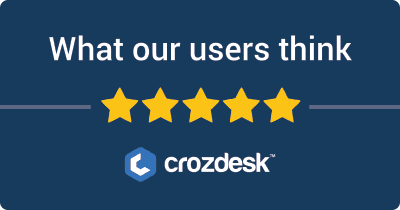
HubSpot and Pipedrive are two prominent players in the Customer Relationship Management (CRM) tools landscape, each offering distinct advantages tailored to varying business needs.
Main Purposes:
- HubSpot: Primarily focuses on inbound marketing, sales, and customer service, providing a comprehensive suite for managing the entire customer journey.
- Pipedrive: Specifically designed for sales teams, Pipedrive emphasizes pipeline management and sales activity tracking, streamlining the sales process.
Reasons for Consideration: Users commonly turn to these CRMs for robust functionality, productivity enhancements, and the potential for increasing sales efficiencies. Businesses seeking to improve their customer interaction and relationship tracking often evaluate these tools.
Primary Comparison Aspects:
- Features: HubSpot offers a broader array of marketing, sales, and customer service tools, while Pipedrive focuses deeply on sales pipeline visualization and analytics.
- Pricing: HubSpot provides a freemium model that can scale, while Pipedrive has tiered pricing based on the features required.
- Ease of Use: Both platforms are designed to be user-friendly; however, HubSpot’s interfaces may have a steeper learning curve due to its extensive features.
Understanding these aspects helps users decide which CRM aligns better with their specific business needs and operational goals.
HubSpot VS Pipedrive: Which tool is the most popular?
| Tool | Number of Reviews | Average Rating | Positive Reviews | Neutral Reviews | Negative Reviews |
|---|---|---|---|---|---|
| HubSpot | 249 | 2.49 | 94 | 6 | 149 |
| Pipedrive | 126 | 4.02 | 100 | 2 | 24 |
Analysis reveals that Pipedrive is the most popular tool with a higher average rating of 4.02 based on 126 reviews, indicating a strong user satisfaction and fewer negative experiences. HubSpot, on the other hand, is the least popular tool, evidenced by an average rating of 2.49 from 249 reviews, highlighting significant user dissatisfaction, as reflected in the 149 negative reviews.


HubSpot and Pipedrive: Quick Comparison Overview
| Feature/Aspect | Ahrefs | SEMrush |
|---|---|---|
| Primary Features | – Site Explorer – Keyword Explorer – Backlink Checker – Content Explorer – Rank Tracker |
– Keyword Research – Site Audit – Position Tracking – Content Analyzer – Marketing Insights |
| Target Audience | – SEO professionals – Digital marketers – Agencies focusing on content marketing and backlink analysis |
– Digital marketers – SEO experts – Content marketers – Social media marketers and PPC specialists |
| Main Advantages | – Robust backlink analysis – Comprehensive keyword data – Intuitive user interface – Constantly updated index |
– All-in-one digital marketing tool – Extensive competitor analysis – Wide array of tools for SEO and PPC – Integrated social media management |
| Core Value Proposition | Focused on providing in-depth SEO insights, particularly strengths in backlink profiles and organic keyword rankings. Ideal for users prioritizing content strategy and link-building efforts. | Offers a holistic view of digital marketing, making it easier to manage all aspects of online presence through an extensive range of tools for SEO, PPC, and social media marketing. |
| Ideal Use Cases | – Conducting comprehensive link audits – Developing effective content strategies – Tracking backlinks and organic rankings – Keyword planning for SEO campaigns |
– Managing and optimizing PPC campaigns – Conducting competitive analysis for market positioning – Comprehensive content analytics and SEO tracking – Social media metrics and management |
Most liked vs most disliked features of HubSpot and Pipedrive
| Aspect | HubSpot | Pipedrive |
|---|---|---|
| Most Liked Features | – Customization capabilities for specific business needs. – Commendable free version providing value for small businesses. – Easy navigation for basic functions aiding onboarding. |
– Intuitive software after a learning curve and allows customization. – Outstanding service from specific employees. – Effective dashboard for tracking efforts. |
| Most Disliked Features | – Frustration with customer service, including poor communication and delays. – Deceptive pricing model with escalating costs for essential features. – Issues with auto-renewals and unexpected charges. – Integration problems with other tools. – Lack of clarity on subscription terms and billing cycles. |
– Higher-end pricing. – Reporting features may not be comprehensive for all users. – Challenges integrating with other tools. |
Key Features of HubSpot vs Pipedrive
Certainly! Below are the key features of HubSpot and Pipedrive as CRM tools, along with the benefits of each feature and any unique aspects that each platform offers.
HubSpot CRM Features
-
Contact Management
- Benefit: Users can store and manage all contacts in a centralized database. This makes it easy to segment audience for targeted marketing efforts.
- Unique Aspect: HubSpot offers a robust free version of its CRM, allowing users to manage an unlimited number of contacts without incurring costs.
-
Email Tracking and Notifications
- Benefit: Users receive notifications when emails are opened or clicked, which provides insight into recipient engagement and helps tailor follow-ups more effectively.
- Unique Aspect: This feature is integrated seamlessly into Gmail and Outlook, enhancing communication without switching platforms.
-
Sales Pipeline Management
- Benefit: Users can visualize their sales process, manage deals, and track progress through stages, improving sales forecasting and efficiency.
- Unique Aspect: HubSpot’s visual pipeline is highly customizable, allowing users to adapt it to their specific sales workflows.
-
Reporting and Analytics
- Benefit: Detailed reporting on sales performance helps identify areas for improvement and evaluate team productivity, allowing for data-driven decision-making.
- Unique Aspect: HubSpot provides customizable dashboards and report templates, empowering users to track metrics specific to their business needs.
-
Integrations
- Benefit: HubSpot integrates with numerous third-party applications, allowing users to connect their tech stack and improve overall efficiency.
- Unique Aspect: It offers a marketplace of over 1,000 apps, enhancing versatility for various business needs.
-
Marketing Automation
- Benefit: HubSpot automates repetitive tasks, such as email sequences or social media posting, saving time and ensuring consistent outreach.
- Unique Aspect: Its automation tools are intuitive, enabling users to design complex workflows with a visual interface.
-
Customer Service Tools
- Benefit: Users can manage customer inquiries and support tickets effectively, improving response times and customer satisfaction.
- Unique Aspect: HubSpot includes a free live chat feature to engage with visitors in real time, which helps nurture leads directly.
Pipedrive CRM Features
-
Visual Sales Pipelines
- Benefit: Offers a clear, intuitive visual representation of sales stages, making it easier for users to track deals and prioritize activities.
- Unique Aspect: Its Kanban-style view allows for easy customization and drag-and-drop functionality to update deal statuses quickly.
-
Activity and Goal Tracking
- Benefit: Users can schedule activities, such as calls and meetings, and track their progress toward sales goals, ensuring consistent follow-up and productivity.
- Unique Aspect: Pipedrive focuses heavily on driving user activity with features like reminders and to-do lists integrated directly into the sales process.
-
Email Integration
- Benefit: Users can connect their email accounts to send and receive emails within Pipedrive, keeping communication centralized for better tracking.
- Unique Aspect: Its integration provides email templates and tracking, giving users the ability to personalize outreach effortlessly.
-
Customizable Reporting
- Benefit: Pipedrive offers reporting features that allow users to build custom reports to analyze their sales activities and results.
- Unique Aspect: The reports can be visualized in various formats, enabling users to read data in the way that makes the most sense for their teams.
-
Web Forms and Lead Capture
- Benefit: Users can create customizable web forms to gather lead information directly from their website, streamlining lead generation.
- Unique Aspect: The ease of embedding these forms into existing sites allows for quick setup without IT involvement.
-
Sales Forecasting
- Benefit: Pipedrive provides insights into future sales performance based on current pipeline activities, helping users make informed business decisions.
- Unique Aspect: The forecasting tool allows users to visualize future scenarios based on historical data, which can be adjusted for various outcomes.
-
Integrations with Apps
- Benefit: Pipedrive integrates with many popular software applications, allowing users to enhance their productivity and streamline workflows.
- Unique Aspect: The Pipedrive Marketplace offers a curated collection of apps specifically for enhancing sales performance.
Summary
In summary, both HubSpot and Pipedrive offer powerful features tailored to enhance users’ CRM experiences, yet they cater to slightly different audiences. HubSpot excels with its user-friendly, all-in-one marketing and customer service tools, while Pipedrive provides a robust sales pipeline management system aimed at optimizing sales processes. Depending on needs—whether it’s marketing automation or sales-focused capabilities—each has its unique strengths to consider.
HubSpot vs Pipedrive Pricing Comparison
| Feature | HubSpot Pricing Tiers | Pipedrive Pricing Tiers |
|---|---|---|
| Free Tier | Yes, includes Contact Management and limited CRM features | Yes, 14-day free trial available, no permanent free tier |
| Starter Plan | Starts at $45/month (billed annually), includes basic CRM features | Essential Plan starts at $14.90/user/month (billed annually) |
| Main Offerings (Starter Plan) | – Easy-to-use CRM – Email tracking – Lead capture forms – Dashboard reporting |
– Deal management – Customizable pipelines – Activity reminders |
| Professional Plan | Starts at $800/month (billed annually) | Professional Plan starts at $29.90/user/month (billed annually) |
| Main Offerings (Professional Plan) | – Marketing automation tools – SEO recommendations – A/B testing for emails |
– Advanced reporting and forecasting – Lead scoring – Custom workflows |
| Enterprise Plan | Starts at $3,200/month (billed annually) | Enterprise Plan starts at $59.90/user/month (billed annually) |
| Main Offerings (Enterprise Plan) | – Custom objects – Event triggers – Advanced reporting and analytics |
– Custom fields for deals and leads – Dedicated account manager – Advanced API access |
| Discount Options | 20% discount for annual plans, free trial available for 14 days on professional plans | 17% discount for annual billing, 14-day free trial offered |
| Payment Cycle | Monthly or annually | Monthly or annually |
Summary of Differences
- Free Tier: HubSpot offers a permanent free tier while Pipedrive provides a temporary 14-day free trial.
- Pricing Range: HubSpot’s entry-level plan is higher than Pipedrive’s, with a minimum monthly cost of $45 compared to Pipedrive’s $14.90.
- Feature Sets: HubSpot focuses on marketing automation starting from the Professional plan, while Pipedrive is more sales-centric, emphasizing deal management and reporting in its lower-tier plans.
- Discounts: HubSpot offers a more significant annual billing discount of 20% compared to Pipedrive’s 17%.
Support Options Comparison: HubSpot vs Pipedrive
| Feature | HubSpot | Pipedrive |
|---|---|---|
| Live Chat | Available for paid plans; responsive support | Available for all users; integrated chat |
| Phone Support | Available for paid plans; limited hours | Available for paid plans; limited hours |
| Documentation | Extensive knowledge base; detailed articles | Comprehensive help center; user-friendly |
| Webinars/Tutorials | Regular webinars and tutorials; extensive resource library | Limited webinars; basic tutorial videos |
| Community Forums | Active community forums for peer support | Community forums available; less active |
Overall, both HubSpot and Pipedrive offer solid support options, with HubSpot providing more extensive resources in terms of documentation and webinars, while Pipedrive has accessible live chat support for all users and a straightforward help center.
Unique Features of HubSpot Vs Pipedrive
| Feature | HubSpot | Pipedrive | Added Value | Decision Factors |
|---|---|---|---|---|
| Free CRM Tier | Offers a completely free CRM with essential features. | No free tier, but a free trial available. | Cost-effective entry point for small businesses to begin CRM adoption. | Organizations with budget constraints can start without financial commitment. |
| Integrated Marketing Suite | Built-in marketing tools such as email marketing, social media, and content management. | Primarily focused on sales automation. | Seamless integration facilitates cohesive marketing and sales efforts under one platform without third-party tools. | Businesses that emphasize both sales and marketing alignment may prefer HubSpot for its comprehensive functionalities. |
| Sales Hub – Playbooks | Provides interactive, customizable sales playbooks. | Lacks a direct equivalent. | Helps sales teams standardize best practices and onboarding, enhancing team performance. | Ideal for organizations that prioritize training and consistency in sales processes. |
| Customer Support – Live Chat | Includes integrated live chat and chatbot capabilities. | Limited chatbot functionality without integration. | Immediate customer engagement improves lead nurturing and support. | Businesses looking to enhance customer interaction in real-time will find this feature essential. |
| Reporting & Analytics – Custom Dashboards | Offers robust reporting with customizable dashboards across all tools (sales, marketing, etc.). | Limited customization options for dashboards. | Enables tailored insights and performance tracking across multiple departments. | Organizations needing comprehensive reporting at a granular level may find HubSpot a better fit. |
| HubSpot Academy | Provides free courses and certifications on various topics including inbound marketing and sales. | No comparable training platform. | Empowers users with knowledge, boosting the effective use of the CRM. | Teams seeking to enhance skills and get certified may choose HubSpot for educational opportunities. |
| Sequences | Allows for automated email sequences for lead nurturing and follow-ups. | Basic automation capabilities available, but not as advanced. | Saves time and ensures consistent follow-up with leads. | Companies focused on maintaining frequent contact with leads may value this automation feature. |
| Multiple API Integrations | Extensive integrations with various apps, including marketing and sales tools. | Focus on sales tools primarily, fewer integrations available. | Enhances customization options and allows businesses to create their ideal tech stack. | Businesses with diverse toolsets will appreciate HubSpot’s compatibility with a wide range of applications. |
| Ticket Pipeline | Built-in customer service features including a ticketing system to manage customer inquiries. | Limited capabilities in customer service features. | Centralizes customer support activities, facilitating improved customer satisfaction. | Companies wanting a unified view of sales and customer support may find this beneficial. |


